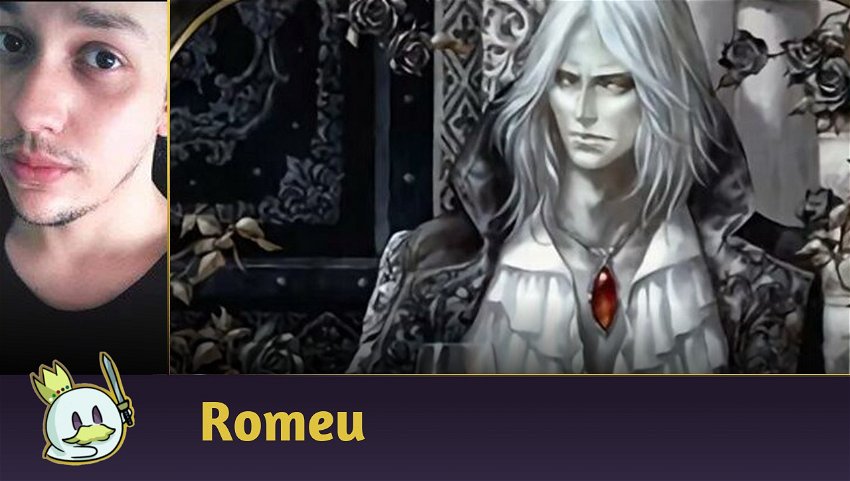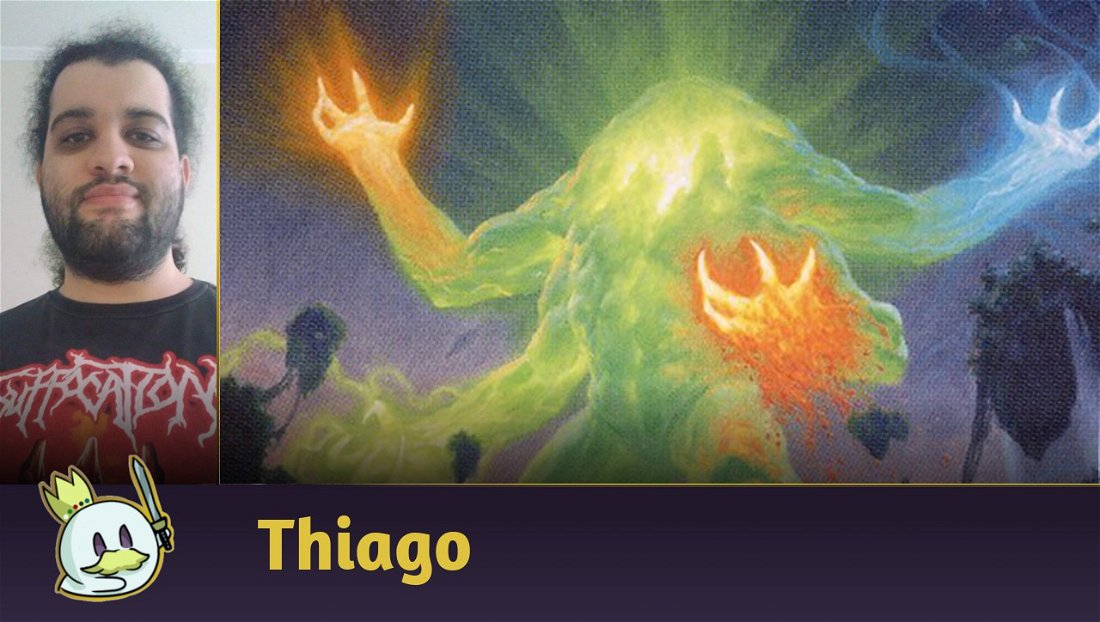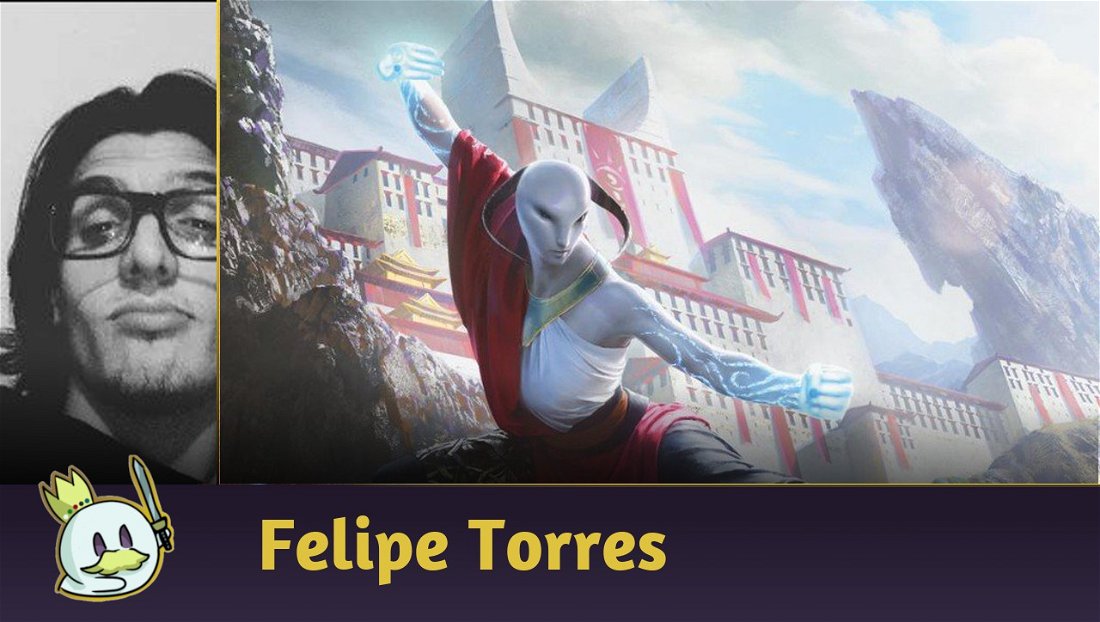Vampires are my favorite Magic: The Gathering tribe, by a significant margin.
Essentially, I started playing Magic tournaments because of the Vampires deck that existed back at the Alara-Zendikar Standard, a Midrange deck that was commonly overshadowed by the best midrange and best deck of the format, Jund.
However, it never meant that I gave up on seeing a Vampires deck succeed, and I was always very excited when cards with good tribal support came up in new sets.
In Pioneer, the Vampires is a well-known archetype, and needs to be respected, as it has a great mix of disruptive elements and powerful synergies among cards that are naturally powerful on their own, making it an extremely self-sufficient archetype where you don't specifically need that a streak of cards is played in the right order to win the game, but that when those streaks occur they become absurdly powerful and commonly bury the opponent in a mix of value and efficient clock.
Ad
Last Saturday, Pioneer Challenge's Top 8 had a total of five copies of Vampires in the Top 8, something that put the archetype in evidence, as this is a considerable achievement for any deck in the format today.
So today, I'll analyze the current Vampires deck on Pioneer!
The Decks
Unlike what I usually do in these analyses, today I'll be presenting the five lists that made it to the Top 8:
As we can see, the deck essentially uses the same creature/land base for the most part, with just a few number variations, and with some significant sideboard changes from one list to another.
The Vampires operate as a Midrange deck, and its goal is to trade resources against your opponent with cards like Thoughtseize and Fatal Push, while cards like Knight of the Ebon Legion set the pressure, and cards like Sorin, Imperious Bloodlord and Champion of Dusk replenish the resources.

As mentioned earlier, the advantage Vampires have as a Midrange is that, in addition to their tribal interactions, the creatures in the deck are naturally good, and cards like Gifted Aetherborn and Kalitas, Traitor of Ghet are very well-placed in the current Metagame, whether for effects that interact with the opponent's resources, or because they exchange positively with various creatures in combat.

Finally, the archetype's card advantage features also extend to the lands used, with Castle Locthwain serving as a great Late-Game manasink, while Hive of the Eye Tyrant and Mutavault can increase the pressure with creatures that survive sweepers.

The new additions, coming from Innistrad: Crimson Vow, gave the archetype more efficient means of grinding matchups, as well as powerful tribal synergy.
Edgar, Charmed Groom is a VERY difficult threat to remove with current traditional removals, as it will commonly require some effect that exiles permanents, or a removal along with a card like Abrade to be removed permanently, offering a mighty 2-for-1, while every turn he stays on the board means an increase in threats the opponent needs to deal with.
Sorin the Mirthless gives the deck card advantage, a means to create more Vampires, and an ability capable of winning the game on its own in conditions that are not difficult to accomplish with this deck, serving as yet another powerful wincondition.
The Core
To better dissect the archetype, it is necessary to elaborate the individual quality of its cards and, for that, I am categorizing the cards according to their presence in the lists, starting with the cards that are present in all or most of the lists, as they are what make up the deck's strategy.

Ad
Knight of the Ebon Legion is a powerful creature in Pioneer, as it was in Standard, as it offers a low-cost body, with a mana sink ability that makes it a compelling threat in Late-Game, making it never specifically be a bad topdeck at any stage of the game.
Dusk Legion Zealot is one of the archetype's means to draw cards and increasing the pressure on the board. Although the 1/1 body is irrelevant, the small amounts of damage it deals, or its interaction with cards like Sorin, Imperious Bloodlord make it a great choice for the archetype.
Gifted Aetherborn trades very well in combat against a variety of creatures, especially the format's aggressive decks while, if left on the board, it can significantly slow down the clock of damage-based decks like Burn.
Also, the 2/3 body means the card escapes some important removals, such as Flame-Blessed Bolt, Bonecrusher Giant, and even Play With Fire.
These creatures make up your early game, and will often be your means of holding the game or setting the initial pressure so that later plays dominate the game.

After all, it is from turn 3 onwards that your moves become extremely advantageous.
Sorin, Imperious Bloodlord serves as a "ramp" by being able to use a Vampire from your hand without paying the mana cost, as well as creating a permanent pump for your creatures, and turning your vampires into a pseudo-Lightning Helix.
Kalitas, Traitor of Ghet is a powerful creature and was once a great multi-format staple, as in a deck that forces unfavorable changes between creatures, or that has numerous removals, Kalitas can turn every unfavorable opponent's trade into one more body to your side of the battlefield.
Finally, Champion of Dusk manages to replenish your hand on a full battlefield or be at least a 4/4 threat that replaces itself in your hand on an empty board, and also interacts very well in Late-Game with effects like Mutavault or with Edgar, Charmed Groom's tokens.
The Interaction

A Midrange deck couldn't survive just playing proactively, so we need ways to interact with the opponent, and Vampires have a great mix of interactions.
Starting with Thoughtseize, there's not much to be said for this card, just that it's by far the best form of interaction in the format and possibly still one of the best in contemporary Magic, even after fourteen years since its original release in Lorwyn.
Fatal Push is still the best one mana removal in the format, and the archetype manages to get the most out of the card thanks to Sorin, Imperious Bloodlord's interactions with Vampires, in addition to now the deck also possess Voldaren Estate to create Blood tokens, which can be sacrificed to activate Revolt.
Finally, despite not being a Vampire, Murderous Rider is a great card in the most diverse matchups, either to remove creatures or Planeswalkers for a fair cost as a flexible removal, or to hold back aggressive decks with another body with Lifelink.
Ad
The New Cards


Most lists are playing two copies of Edgar, Charmed Groom, as the card competes in the four-drop slot with Kalitas, Traitor of Ghet, as well as being a legendary creature, essentially the makes it bad to have multiple copies in hand
Sorin the Mirthless has also been used as one or two copies, and I believe the right number depends on how long you expect the matches to be, long enough for the Planeswalker to stay in play and be a constant source card advantage and a wincondition at the same time.
The Manabase

As dual lands, the deck runs three to four copies of Godless Shrine, a card that interacts well with other lands in the deck, such as Castle Locthwain, and four copies of Brightclimb Pathway, which has the great advantage of being able to enter the battlefield untapped at any time.
Each of the other dual lands in the format have cons that can significantly limit their usefulness for the archetype, such as the need for untapped lands in Late-Game preventing Concealed Courtyard from being as good and functional as other lands.

Urborg, Tomb of Yawgmoth allows all lands to generate black mana, and can be the centerpiece in some starting hands, as lists use around 3 to 4 copies of Mutavault, which only generates colorless mana, and allows cards like Castle Locthwain to enter untapped more easily.
However, the standout land is the new Crimson Vow card, Voldaren Estate, which allows the deck to not only have the mana it needs to cast Edgar, Charmed Groom, but also create Blood tokens that can be used to filter the hand, discarding bad cards such as lands when they are no longer needed, removals at empty boards, or discard spells when they are no longer needed, in search of better options to end the game.
The Sideboard
In Sideboard, there are several options that the most varied lists use, and I'll be mentioning the main cards used in the five lists, in addition to some commonly played options.

For most aggressive games, especially against creature-based decks such as Naya Winota, Humans, or Bant Spirits, Crippling Fear essentially functions as a one-sided sweeper, which can be the card that turns the game around in your favor in a locked board position, or when your opponent is at a significant advantage.

Legion's End is a great card for dealing with low-cost threats, as well as tokens and recurring threats.
Even when the card doesn't reach its goal of exiling recurring creatures, the amount of information you can glean from its ability to see the cards in your opponent's hand is very useful, as well as being a great removal against the tokens created by Esika's Chariot or Edgar, Charmed Groom.
Ad

Graveyard-based strategies are still very present in Pioneer, especially
Izzet Phoenix, which we can still consider as the best deck of the format.
And against this particular archetype, Go Blank is a great card, as it not only significantly disrupts the deck's means to always keep its hand full when exiling the opponent's graveyard, it also removes two important cards from their hand, which could be used to transform Thing in the Ice or look for efficient answers for each situation.

With Vampires becoming an increasingly popular deck, Blood Baron of Vizkopa is a creature capable of breaking the Mirror match math and putting its controller in a significantly advantageous position, as any removal commonly used by black or white decks can handle it.
Furthermore, Blood Baron of Vizkopa also has a strong use against other Black-Based Midrange like Rakdos, or Control decks with targeted removals like Dimir Control.

Deafening Silence is a powerful and difficult to interact sideboard piece against Izzet Phoenix and other decks looking to sequence spells such as Jeskai Ascendancy.
Given that Vampires is a very creature-oriented deck, and that it hardly has the need to use two non-creature spells in the same turn, the drawback imposed by the card is practically irrelevant.

Noxious Grasp is an efficient way of dealing with a plethora of useful targets, ranging from Winota, Joiner of Forces to Teferi, Hero of Dominaria, passing through some of Gruul Aggro's creatures, in addition to practically every creature in Humans.

Liliana, Waker of the Dead is a great addition to attrition matchups, especially against other Midranges, where you'll often have a higher board position, which makes the Planeswalker's discard ability very useful while its removal is easily enabled and her ultimate is capable of winning the game in the long run.

More graveyard interaction, but one specific to dealing with cards like Arclight Phoenix.
Grafdigger's Cage is much more useful in the current context for handling Winota, Joiner of Forces triggers and spells like Collected Company, creating a significant delay in the opponent's game plan while it remains in play, and is commonly the card the opponent will try to play around at all costs.

Finally, a recent addition to the Vampires lists has been the addition of copies of Infernal Grasp to the Sideboard, cards that are very useful in dealing with threats that aren't usually easily answered with Fatal Push, and also for playing matchups against Midrange decks, where you don't care so much about the life loss, as long as it means dealing with a problematic permanent.
How to play against Vampires?
With the deck making five positions in a Top 8, the archetype is likely to gain more visibility in the coming weeks, which begs the question: How to play against Vampires?
Ad
The first point that needs to be understood is that Vampires is a fair deck, that is, they are not trying to make absurd plays or blow up all of a sudden, they make fair trades and win the match by making their threats better than yours, something that isn't too difficult when each of them has a good body and an added effect, besides interacting well with each other.
This means that Vampires operates as a regulator in the game, it will be the aggressor against reactive decks and the controller against proactive decks, and it is commonly built to handle mainly the proactive decks, which means if you are playing Aggro, you need to cadence your plays well so that they have the expected effect, and this must be done in different ways for each deck.
For example, for Burn, the best option you have is to try to play under, and only respond to creatures that pose some threat to your clock, like Gifted Aetherborn or Kalitas, Traitor of Ghet, and essentially preying on a possible lack of speed or poor sequencing of the opponent's cards.
A deck like Humans, on the other hand, needs to establish a superior board position with its interactions, looking to distribute Luminarch Aspirant's +1/+1 counters well, while cards like Thalia's Lieutenant should be used to get the most out of your other creatures, as the numbers will always be more important than their individual power in this game.
On the other hand, Vampires aren't as well-prepared for handling dedicated Control decks, especially since the archetype has few Instant-Speed interactions for permanents like Teferi, Hero of Dominaria or Shark Typhoon, therefore, it's possible that, with good planning to use removals and counterspells on permanents that actually pose a threat, while sweepers and point removals can handle less problematic creatures, a Control deck will have some advantage against the deck.
It seems like an obvious dissertation, but many players tend to neglect the function of each card in their deck when using it in a game, especially against an archetype with so many powerful creatures like Vampires.
Another distinct weakness of the deck is that its interactions are conditional and, except for Murderous Rider, they don't usually handle broad situations, which explains how an Indomitable Creativity deck running The Locust God with Sage of the Falls combo won this Pioneer Challenge.

This means that both efficient combos and the ability to bury the opponent with threats that need to be answered right away are also efficient options for playing against the archetype, as Jeskai Creativity did, since, in addition to the constant threat of the combo, the opponent needed to deal with the possibility that cards like Elspeth, Sun's Nemesis or Shark Typhoon would simply dominate the game.
Conclusion
That was my analysis of the Vampires, a deck which made an impressive result by putting five players in last Saturday's Pioneer Challenge Top 8, including powerful additions from Innistrad: Crimson Vow, which gave greater resilience to the archetype's ability to play longer matches without putting aside its Early-Game interactions.
Ad
The coming weeks will tell whether the archetype has the potential to dethrone Izzet Phoenix and become the new best deck of the format, as well as how other decks will adapt to the archetype, as well as elaboration and new ways to interact with the current Metagame.
Thanks for reading!









— Kommentare0
Sei der erste der kommentiert